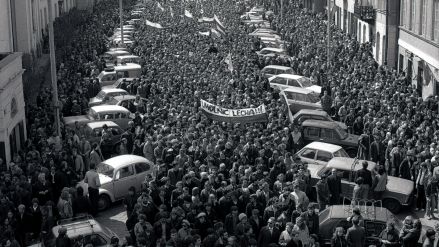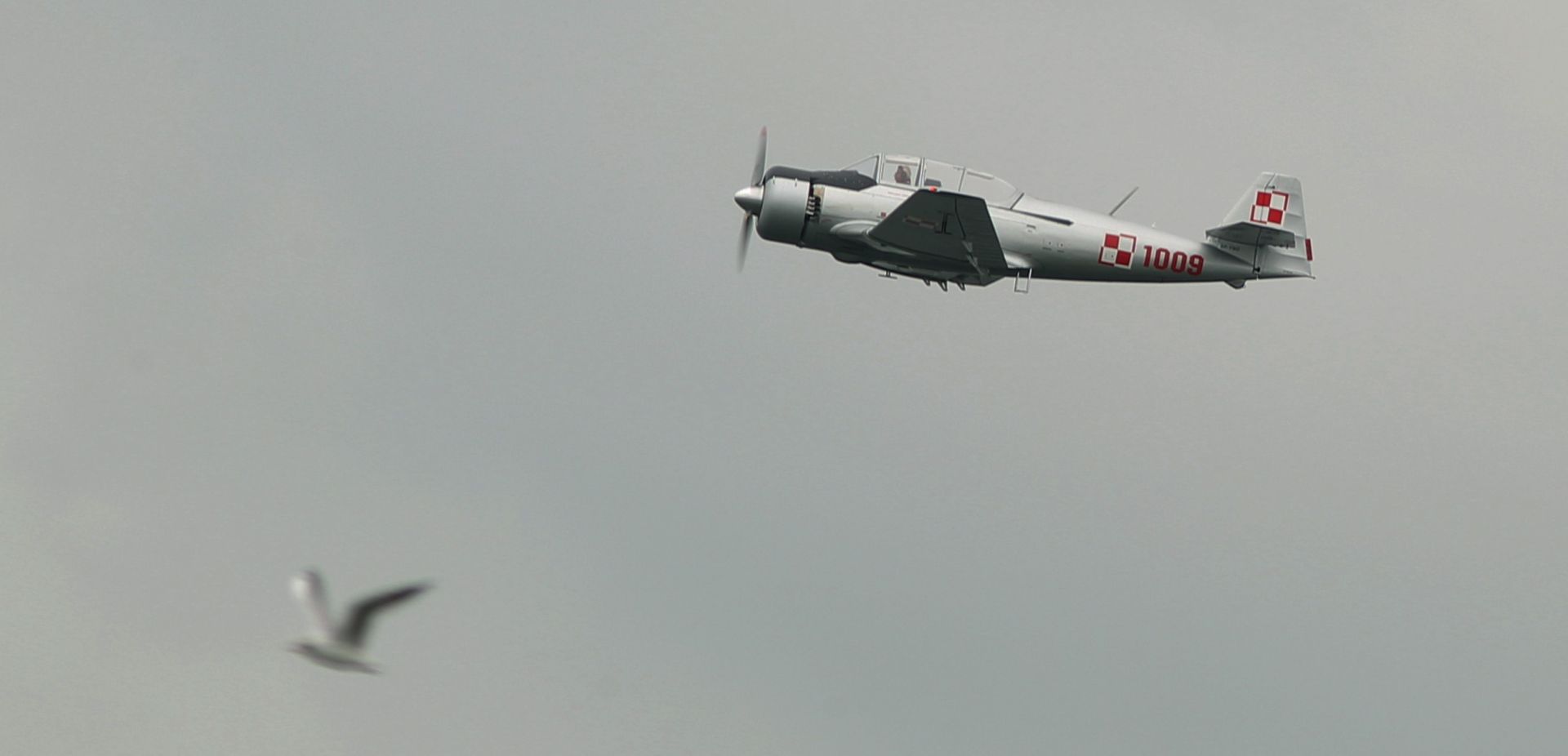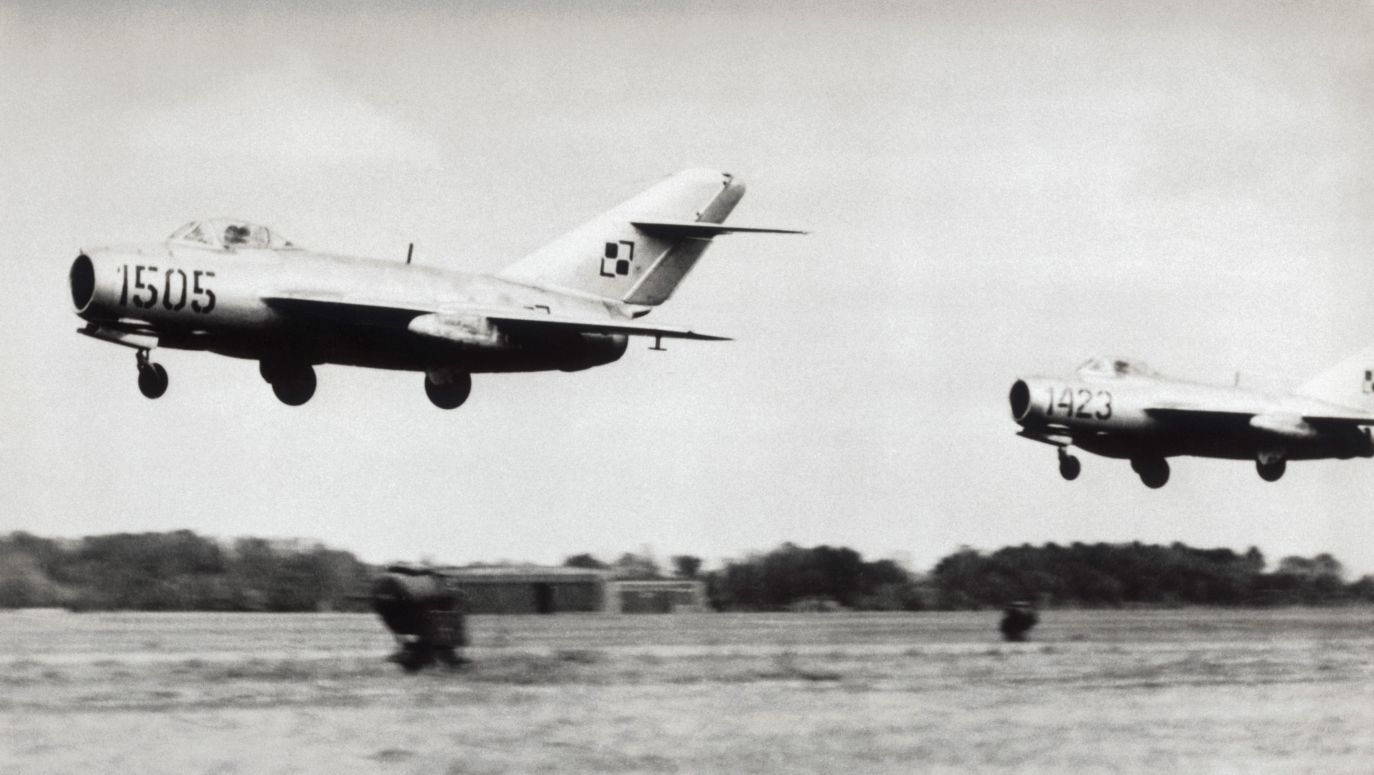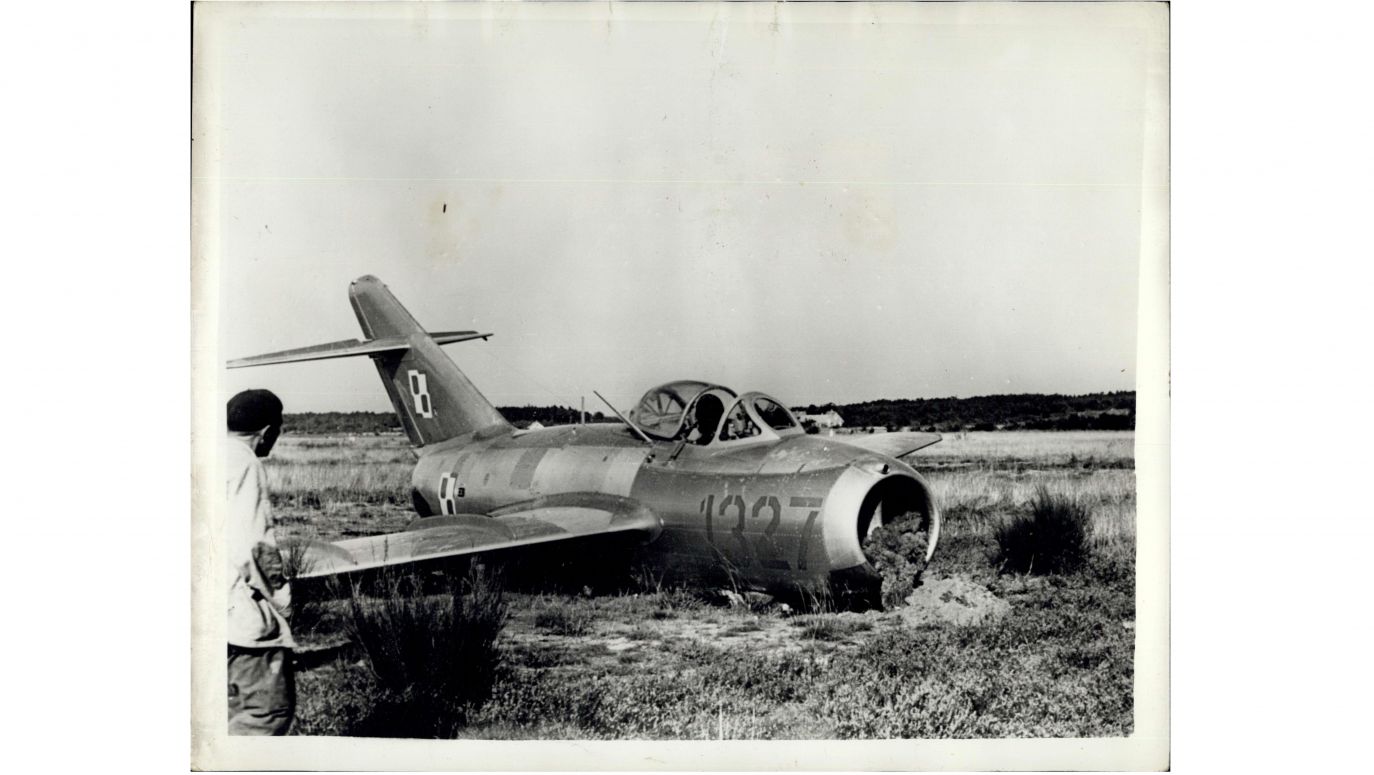Choose freedom at MiGhty speed
25.05.2022
The beginning of the 1950s in communist Poland. The hardest times of the Stalinist period. Young Polish pilots were being trained by the Russians how to fly barrel-shaped MIG-15 jets. There were those who strived to escape by their aircraft to the West. Every time it was a great shock for themselves, their colleagues and superiors, for their families – and, of course, for the communist authorities.
It could be heard of successful escapes over the Radio Free Europe – from those who had made it. Their colleagues spoke about it reluctantly, all the more so, because if somebody talked to them, it was the investigators of the Military Information.
A flight in the blizzard
It was March 5, 1953. Nobody yet knew that late in the evening Joseph Stalin would die, the general secretary of the Communist Party of the Soviet Union and prime minister, but more frankly – the ruler of the USSR. Life was going its normal way, also in Poland. – We took off as a pair – says Colonel Jan Jąkała, then a second lieutenant. – We set a course over the Kampinos Forest and then towards Kutno. He was the target, I was going to attack him. Unfortunately, the base of the clouds has lowered. I entered the clouds as he turned. I lost sight of him. I fell into a terrible snowstorm in the area of Łowicz. I was flying in plain sight of the ground and had no experience of flying in clouds. The turning point was planned over Łódź; I lowered the flight, but I was aware that I could not descend below 300 meters, because there was a danger of colliding with something, for example a chimney…
The young pilot was doing every effort to find the nearest airport.
“In spite of the snow, I was finally able to see them”, he says. – I made a runway approach, I failed the first time and had to elevate the plain. Finally, I decided to land. I released the flaps, aerodynamic brakes and I managed to land safely – he laughs.
Meanwhile, an event that shocked the entire Polish military aviation, took place almost simultaneously.
– On the same day, a friend from Słupsk, second lieutenant Franciszek Jarecki, flew from Słupsk with Józef Caputa, who was leading him. When he was over Kołobrzeg, he changed course and flew over Bornholm – recalls colonel Jąkała…
The escape to Bornholm had immediate consequences for Jan Jąkała. – It was largely believed that I was in collusion with Jarecki and I was interrupted only by a snowstorm – he says. – I was suspended and incarcerated. I wrote my CV every day. Unfortunately, captain Robak, the head of human resources of the 5th Fighter Aviation Division, discovered that I had a family abroad. It incriminated me…
The escape to Bornholm
Jarecki's decision was shocking for his colleagues. – He was a training leader, it had been written about him in the newsletters. Many thought that he was favored, even envied him - says Jan Jąkała. – Meanwhile, he decided to fly to Bornholm…
The entire escape took several minutes. As he himself said, among others at the Radio Free Europe, there was considerable overcast during the flight. He took advantage of it and detached himself from the tutor. He dropped the heavy fuel tanks and descended to a small height.
– It was relatively easy to get away. He flew at an altitude of 100 meters at a speed of 800-900 km/h. The radars were still imperfect, so no one detected it – indicates col. Jąkała.
Initially, it was assumed that Jarecki had crashed. However, discarded fuel tanks were found. Eight Soviet MIGs patrolling the Baltic Sea were sent after him. But it was too late.
– Jarecki said that the Russians were chasing over him, which could not be true – no one intercepted him in Poland, and even more so over Bornholm – claims Jan Jąkała.
The pilot thought there was a military airport on Bornholm, but in the island's largest city, Rønne, there was only a small civilian one, fenced off with a wire fence. “I picked up the plane quickly, increased the speed, and jumped over the fence. I did it in such a way that I removed the bar and took it on myself to lower it, just to sit on the very edge of the airport, because it was terribly small – he later said on Radio Free Europe.
He said that he did not have a map, so he prepared the course to Bornholm on the basis of a propaganda drawing in “Sztandar Młodych”. After landing, he had to – without knowing the language – explain to the Danes who he was. The phrases: “communism kaput” and “asylum please” helped.
For NATO, the possibility of thoroughly examining the MiG-15 was very important. On March 6, American and British experts arrived on Bornholm. The machine was sent to the Danish Værløse air base, where it was completely dismantled and then put back together. Finally, on March 19, the plane was sent to Poland, shipped under the supervision of a Polish officer.
Jarecki asked for asylum in Great Britain. He went to Munich, Germany, where he performed at the Polish Broadcasting Station of RFE/RL – Jan Nowak-Jeziorański (its head) held a long interview with him. In London, general Władysław Anders awarded him the Cross of Merit with Swords (military version of the Cross of Merit). Then he moved to the United States, where President Dwight Eisenhower granted him American citizenship (to make it happen faster, he was adopted by one of the Polish congressmen) and awarded a prize of $ 50,000. (against today's money it is half a million USD). In communist Poland Franciszek Jarecki was sentenced to death in absentia; he came to Poland only in 2005. He died on October 24, 2010. The escape had disastrous consequences for his family – his mother was brutally interrogated and severely beaten; she was sentenced to two years.
General Turkiel’s decision
Lieutenant Caputa, who flew together with the fugitive, was arrested and interrogated, as was Józef Jąkała. In the end, he returned to the army, even achieved the rank of colonel – he died in 2019. And what happened to the then second lieutenant, Jąkała?
– After three weeks in custody, I was summoned for an interview by lieutenant general Iwan Turkiel (Ukrainian, colonel general of the Soviet Army Air Force, seconded to the Polish Army as the commander of the Polish Air Force – ed.). His office was located at Żwirki i Wigury st. in Warsaw. The head of human resources introduced me. Turkiel told him to leave - and asked if I wanted to go to Bornholm too. I replied no. “I believe you”, he replied in the Russian language. And I was able to return to the military unit – says col. Jąkała.
He talks of what the Polish aviation looked like in the 1950s - and later. – First, we were trained by frontline pilots, the Russians, who flew the Yak-3 and Yak-9 airplanes, he says. - They were simple guys with no education whatsoever, but they knew how to fly. One of the Russians, a senior colonel, was called “Kitay” (Chinese – DSK) because he served in the Korean War as a “Chinese volunteer”, he says. – The first plane we learned to fly was the UT-2. Then came the Yak-9 and finally the MiG-15 jet engines…
There was a great change in the second half of the 1950s. The Russian pilots returned to the USSR, and the “English”, i.e. Polish pilots who fought in the Battle of Britain, came to the aviation, or perhaps they did come back.

On May 1, people chanted: “Come with us. Today, they won’t beat.”
see more
– Stefan Witorzeńć who was a flight instructor before the war, and in the Battle of Britain he was even the commander of the 2nd Polish Fighter Wing. A cultured and intelligent man was an authority for us, says Jan Jąkała. – Tadzio (diminutive for Tadeusz) Góra, in gliding before the war, also flew in England. He returned to the army, like Witorzeńć, in 1957...
And the famous Polish ace, Stanisław Skalski. – In 1970 I joined the Aero Club and became Skalski's subordinate – says col. Jąkała. – That was an experience!
It is worth mentioning that in 1956 general Iwan Turkiel returned to the USSR, where he later became the deputy commander of the Air Force. He replaced general Jan Frey-Bielecki. Paradoxically, he was a pre-war Polish communist, and after the war he worked, among others in the security services – but it was he who reinstated Polish officers who had come from Great Britain. And then, supposedly under pressure from the Soviets, he was fired from his post.
The dramatic consequences of escapes
During his service, Jan Jąkała heard about many escapes of Polish pilots to the West. – Two colleagues were sentenced to twelve years in prison when Jaźwiński escaped ... – he says.
Second lieutenant Zdzisław Jaźwiński flew to Bornholm, just like Jarecki had done before. However, he did not find the airport and eventually tried to land in the field near Rønne. The plane crashed however Jaźwiński survived. Like his predecessor, he went to the USA and he received the Cross of Merit with Swords from General Anders.
His commander, lt. Zdzisław Skrzydłowski found out about it in the evening. He was soon arrested along with lieutenant Kazimierz Ławniczak and second lieutenant Franciszek Sosnowski. These two were sentenced to long prison terms when Skrzydłowski was sentenced to four years behind bars. Jaźwiński's parents were sentenced to two years in a labor camp, among others for giving their son “active help and moral support”.
– And in 1963, Ryszard Obacz fled to Berlin. He flew in a Bies plane and landed at Tempelhof airport – says Jan Jąkała. – And he had something to run away with, because he actually dealt with the air defense system of Warsaw.
TS-8 Bies (lit. Devil – DSK) is a training plane. While the jet MiG-15 could reach speeds of over a thousand kilometers per hour, this propeller plane – only at 310 km/h. Major Obacz was supposed to land on the road near Goleniów near Szczecin, but flying 50 meters above the ground he headed for West Berlin. At first he could not land because the runways were full and sheep were grazing on the grass. Ultimately, however, he managed to sit down on the ground, and he was greeted by the Americans – the airport commandant and a CIA agent.








